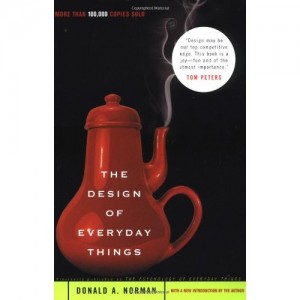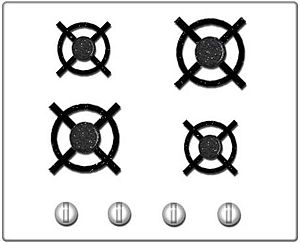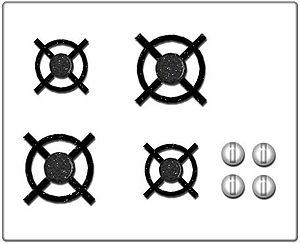So this week I finished the book The Design of Everyday Things by Donald A. Norman.

I learned a lot about basic design in this book. Some of the highlights include;
- Natural Mapping: This is a very important part of design. Natural mapping has to do with how the layout of the controls are arranged when working with an object that requires controls. If an object has good natural mapping than a person should be able to use it by just looking at it. An example of this is below with the stove top.
- Constraints and Affordances: This is has to do with how many things an object can do. For example, when you look at a coffee mug handle there are very few ways to hold it. It is designed in such a way that you want to hold it with one hand because that is all that is physically possible. When an object contains affordances it makes it easier for people to use because there are less ways for them to mess up.
- Feedback and Visibility: This is how an object tells a person that what they just manipulated did something. So when you turn the tv on and you can see the little light in the corner turn from red to green. This means that you pressing the button did something and everything is running smoothly. Computers are notorious for having very little feedback. This is because so much is happening behind the scenes it it very difficult to show users what is happening. So when you click on something and nothing happens, the little progress wheel doesn’t pop up, you automatically assume that you failed in clicking. It is important to have feedback or else users assume that either they are doing something wrong or that the item is broken.
Bad Design

Good Design

The picture above shows how a design with natural mapping should look. You know how to use the stove by just looking at it.



